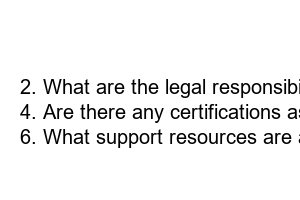아동학대 신고의무자 교육
Title: Effective Child Abuse Reporter Training: Equipping Individuals to Safeguard Children
Introduction:
Child abuse is a devastating reality that affects countless children worldwide. In order to combat this critical issue, it is crucial to provide robust child abuse reporter training programs that empower individuals to recognize and report instances of abuse. By equipping individuals with the knowledge and skills necessary to effectively identify and respond to child abuse, we can work collectively towards ensuring the safety and well-being of our most vulnerable population.
Subheadings:
1. The Importance of Child Abuse Reporter Training
Effective child abuse reporter training is paramount in creating a safer environment for children, as it enables individuals from various backgrounds to play an active role in the prevention, intervention, and support of abuse victims.
2. Identifying Signs of Child Abuse
By familiarizing trainees with the various indicators of child abuse, including physical, emotional, and behavioral signs, child abuse reporter training assists in detecting potential instances of abuse and addressing them appropriately.
3. Reporting Procedures and Legal Responsibilities
Understanding the reporting procedures and legal obligations surrounding child abuse is essential. Through comprehensive training, individuals learn how to report incidents promptly, ensuring that proper authorities are notified, and that appropriate interventions can be implemented effectively.
4. Supporting Victims and Providing Resources
Child abuse reporter training goes beyond the initial reporting phase. It also emphasizes the significance of offering support to child victims, their families, and the community as a whole. This training equips individuals to connect victims with a range of resources, such as counseling services, legal aid, and community support groups.
5. Building Strong Partnerships
Collaboration between child abuse reporters and relevant organizations, such as child protective services, law enforcement, and healthcare professionals, is crucial for effective intervention and protection. Child abuse reporter training fosters these partnerships, promoting a cohesive response to abuse cases.
6. Overcoming Challenges and Stress Management
Child abuse reporter training also addresses the emotional toll that reporting child abuse can have on individuals. By providing guidance on self-care and stress management techniques, the training ensures that reporters can maintain their well-being while performing their important role.
7. Continuous Training and Professional Development
Child abuse reporter training should not be viewed as a one-time endeavor, but rather an ongoing process. Regular updates and additional training opportunities enable individuals to stay up-to-date with evolving practices, thereby enhancing their ability to identify and respond to child abuse effectively.
Summary:
Child abuse reporter training is a critical step in the fight against child abuse. By providing comprehensive training that encompasses sign identification, reporting procedures, victim support, and ongoing professional development, we can empower individuals to proactively safeguard children, ensuring their safety and well-being. Together, let us work towards a future where every child grows up in a safe and nurturing environment.
FAQs:
1. How can I participate in child abuse reporter training?
2. What are the legal responsibilities of a child abuse reporter?
3. How can child abuse reporter training benefit my community?
4. Are there any certifications associated with child abuse reporter training?
5. Can child abuse reporter training help in preventing future abuse?
6. What support resources are available to child abuse reporters?

